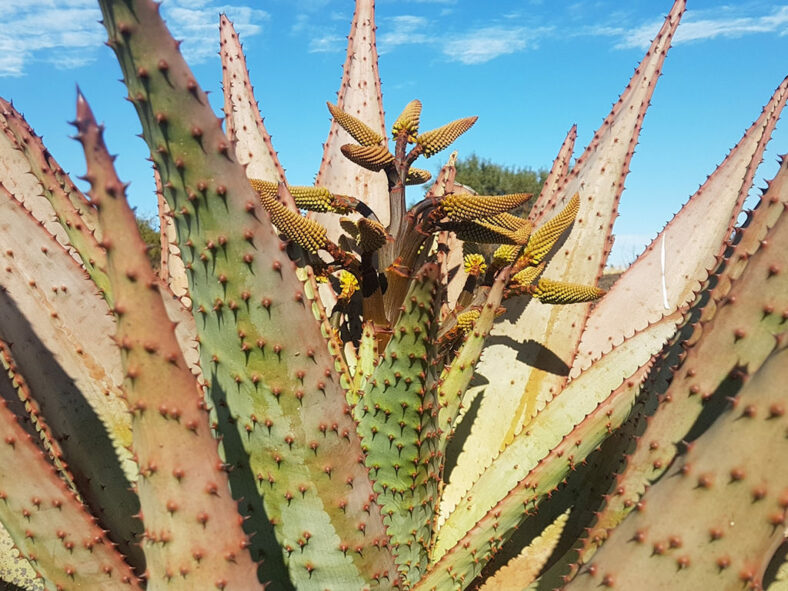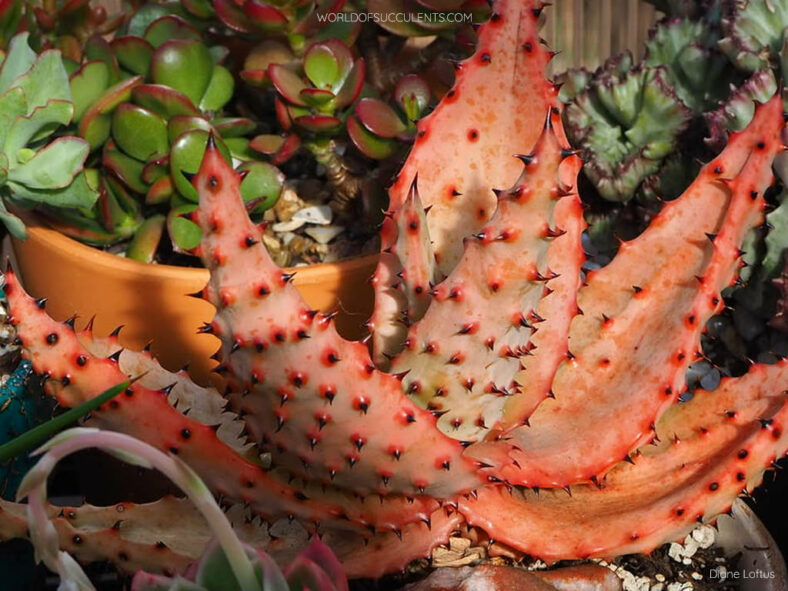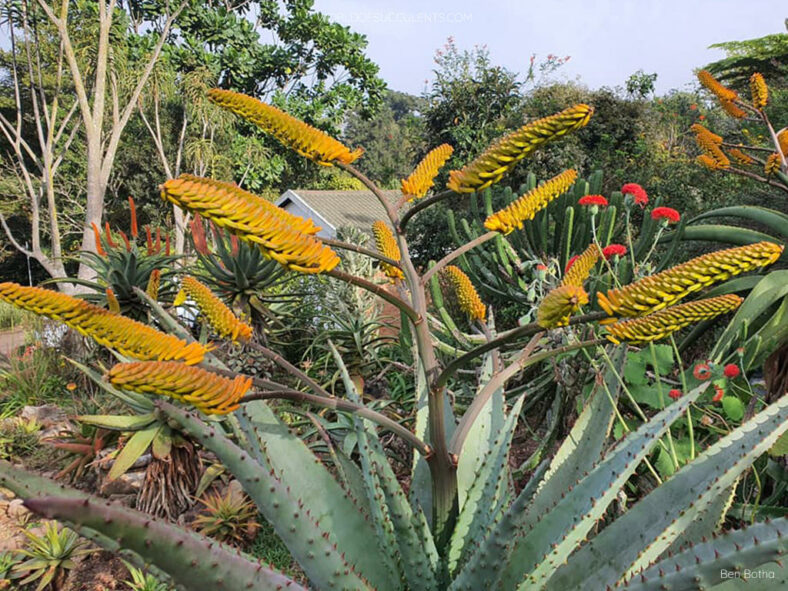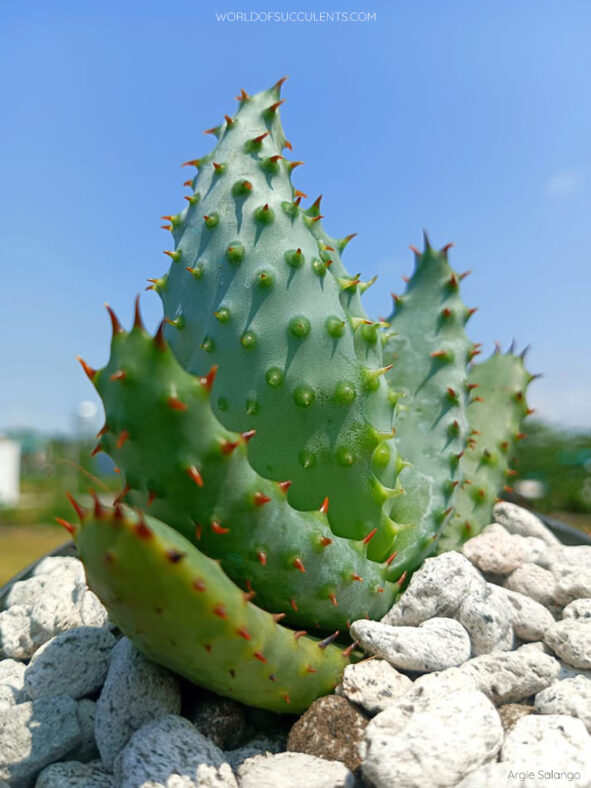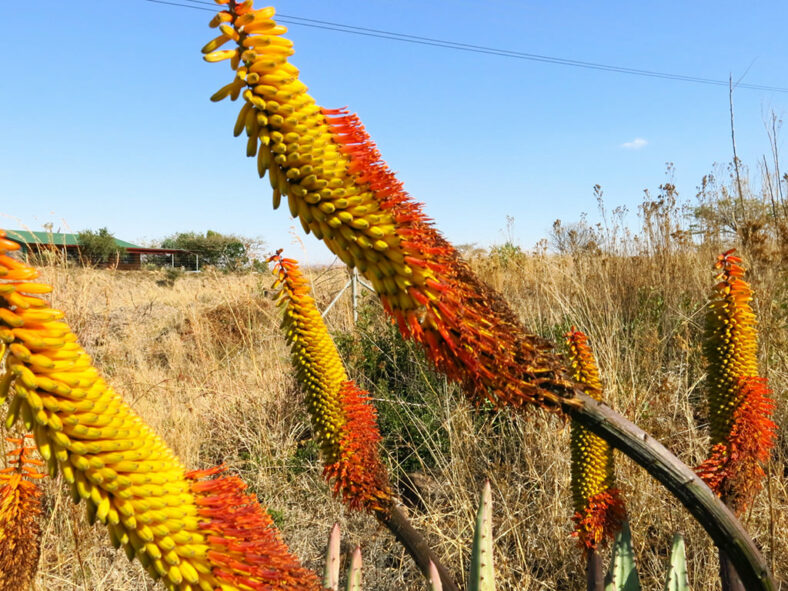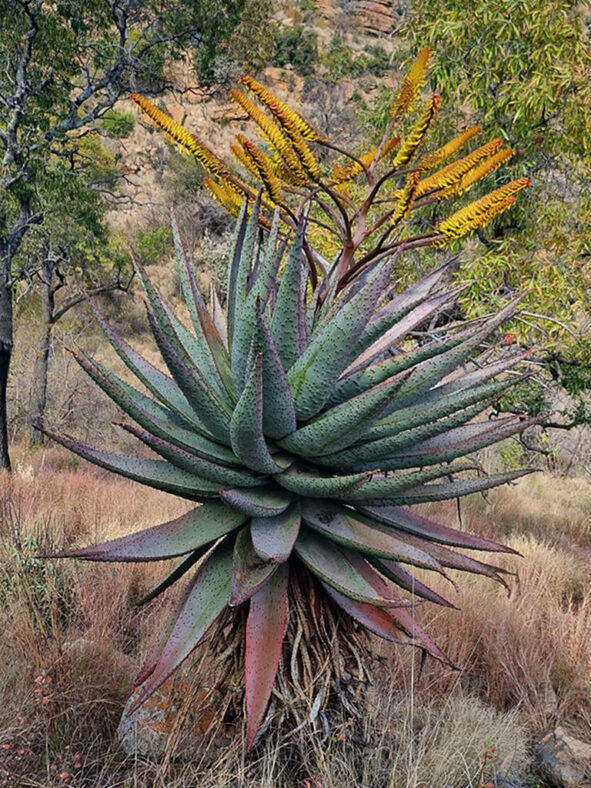Aloe marlothii is a remarkable unbranched tree, easily recognized by its large panicle of horizontal racemes. It can be easily confused with Aloe excelsa, Aloe ferox, and Aloe africana when not in flower.
Scientific Name
Aloe marlothii A. Berger
Common Name(s)
Flat-flowered Aloe, Mountain Aloe, Spiny Aloe, Transvaal Aloe, Tree Aloe
Synonym(s)
Aloe marlothii subsp. marlothii
Scientific Classification
Family: Asphodelaceae
Subfamily: Asphodeloideae
Genus: Aloe
Etymology
The specific epithet "marlothii" (pronounced mar-LOTH-ee-eye) honors Rudolf Marloth (1855-1931), a German-born South African botanist, pharmacist, and analytical chemist, best known for his Flora of South Africa.
Origin
Aloe marlothii is native to South Africa (North-West, Gauteng, Limpopo, Mpumalanga, and KwaZulu-Natal), Eswatini, Mozambique, Zimbabwe, and Botswana and can be found in a wide variety of habitats at elevations from sea level up to 5,250 feet (1,600 m).
Description
Aloe marlothii is a large succulent with lance-shaped leaves arranged in a dense rosette at the tip of a simple stem. The stem is covered with persistent old dried leaf remains and can grow up to 4 feet (13.1 m) tall and 10 inches (25 cm) in diameter, although sometimes it can reach a height of 2 feet (6 m). The leaves are dull greyish-green to glaucous, often tinged red, and have scattered reddish-brown prickles on both surfaces, especially the lower surface. They are deeply channeled, incurved to spreading or slightly recurved with age, and can measure up to 5 feet (1.5 m) long and 10 inches (25 cm) wide. The margins of the leaves are armed with stout, deltoid, reddish-brown teeth.
From late fall to early spring, Aloe marlothii produces an attractive branched inflorescence with 20 to 30 racemes of golden-yellow to orange or reddish-orange flowers. The Inflorescence is erect and can grow up to 32 inches (80 cm) tall above the rosette. The racemes can reach up to 20 inches (50 cm) in length and 2.4 inches (6 cm) in width, with the flowers arranged more or less along the upper side of the branch. The subcylindrical flowers can measure up to 1.4 inches (3.5 cm) long and 0.3 inches (0.7 cm) in diameter.
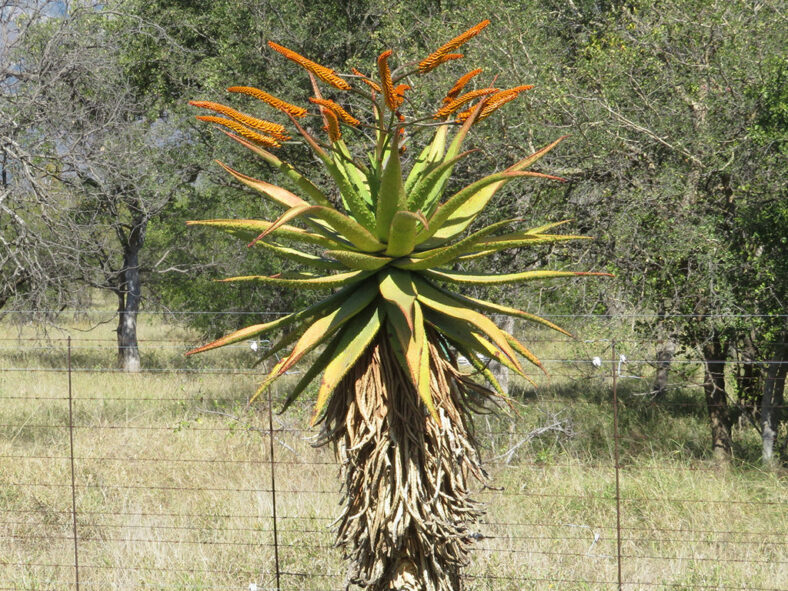
How to Grow and Care for Aloe marlothii
Light: When growing Aloe marlothii indoors, place it in a window with plenty of bright, indirect sunlight. Rotate the pot once or twice a week to ensure all sides of the plant receive equal lighting. Outdoors, the plant prefers light shade, especially during the hottest parts of the day.
Soil: Great drainage is essential for growing this plant because too much moisture for an extended period can cause root rot. Use commercial soil for succulents or make your own well-draining mix.
Temperature: When temperatures shift below 50 °F (10 °C), it is time to bring this plant inside. It tolerates heat fairly well but will not survive a hard frost. Aloe marlothii grows best in USDA Plant Hardiness Zones 9a to 11b, with average minimum winter temperatures ranging from 20 to 50 °F (-6.7 to 10 °C).
Watering: This plant needs regular watering but can tolerate drought conditions for short periods. Water deeply, but only when the soil is completely dry to the touch, and do not let water stand in the rosettes. Cut back on watering during the winter months.
Fertilizing: Although it generally does not require fertilizer, Aloe marlothii will benefit from extra nutrients. Use a water-soluble fertilizer diluted to half the recommended strength.
Repotting: Repot only as needed during spring. Pick a container that is one size larger and has drainage holes.
Propagation: Since Aloe marlothii is a plant with a solitary growth habit, it can only be propagated by seeds during warm months.
Learn more at How to Grow and Care for Aloe.
Toxicity of Aloe marlothii
Aloe marlothii is non-toxic to people but can be mildly to moderately toxic to pets.
Links
- Back to genus Aloe
- Succupedia: Browse succulents by Scientific Name, Common Name, Genus, Family, USDA Hardiness Zone, Origin, or cacti by Genus
Photo Gallery
Click on a photo to see a larger version.
